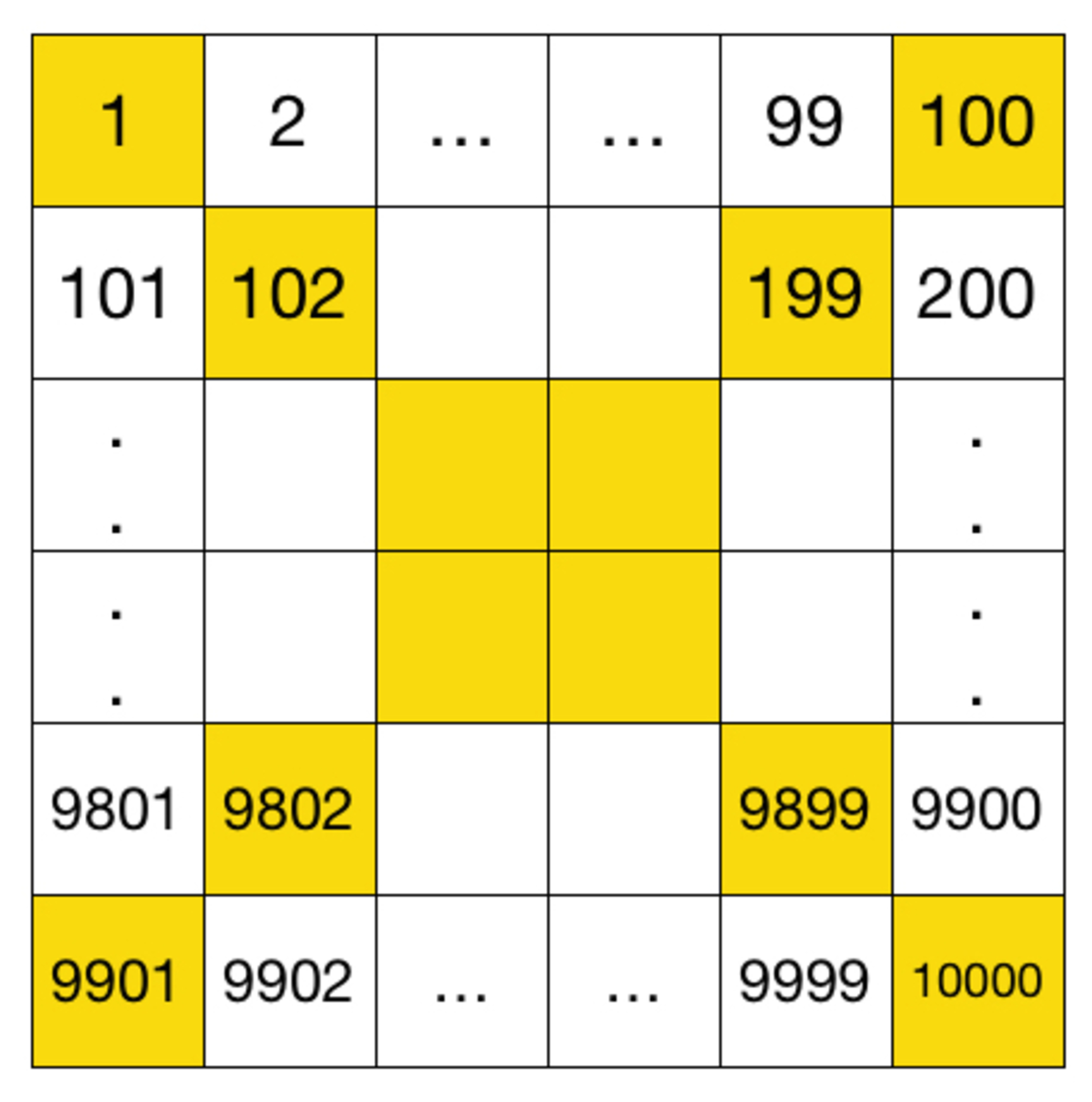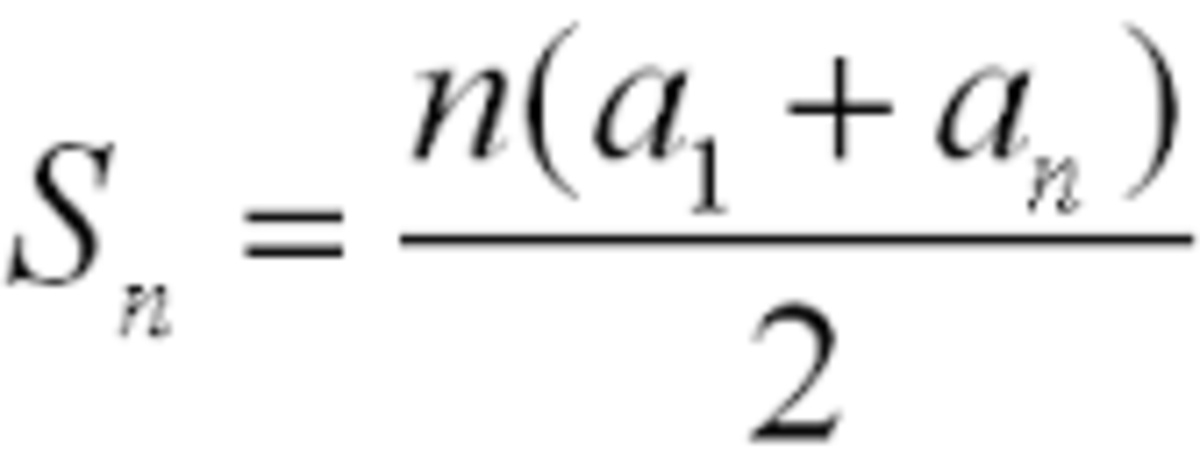Diagonal Sum
Integers from 1 to 10000 are written orderly in a grid of , as shown in the table below.
What is the sum of the numbers in the two diagonals highlighted in yellow?

The answer is 1000100.
This section requires Javascript.
You are seeing this because something didn't load right. We suggest you, (a) try
refreshing the page, (b) enabling javascript if it is disabled on your browser and,
finally, (c)
loading the
non-javascript version of this page
. We're sorry about the hassle.

Top left and bottom right cells add to 10001, as do the bottom left and top right. This pattern continues for all highlighted cells towards the middle. Since the square is 100x100, there will be 50 pairs of numbers adding to 10001 on each diagonal and since there are two diagonals there are 100 pairs. Thus 100 x 10001 = 1000100.